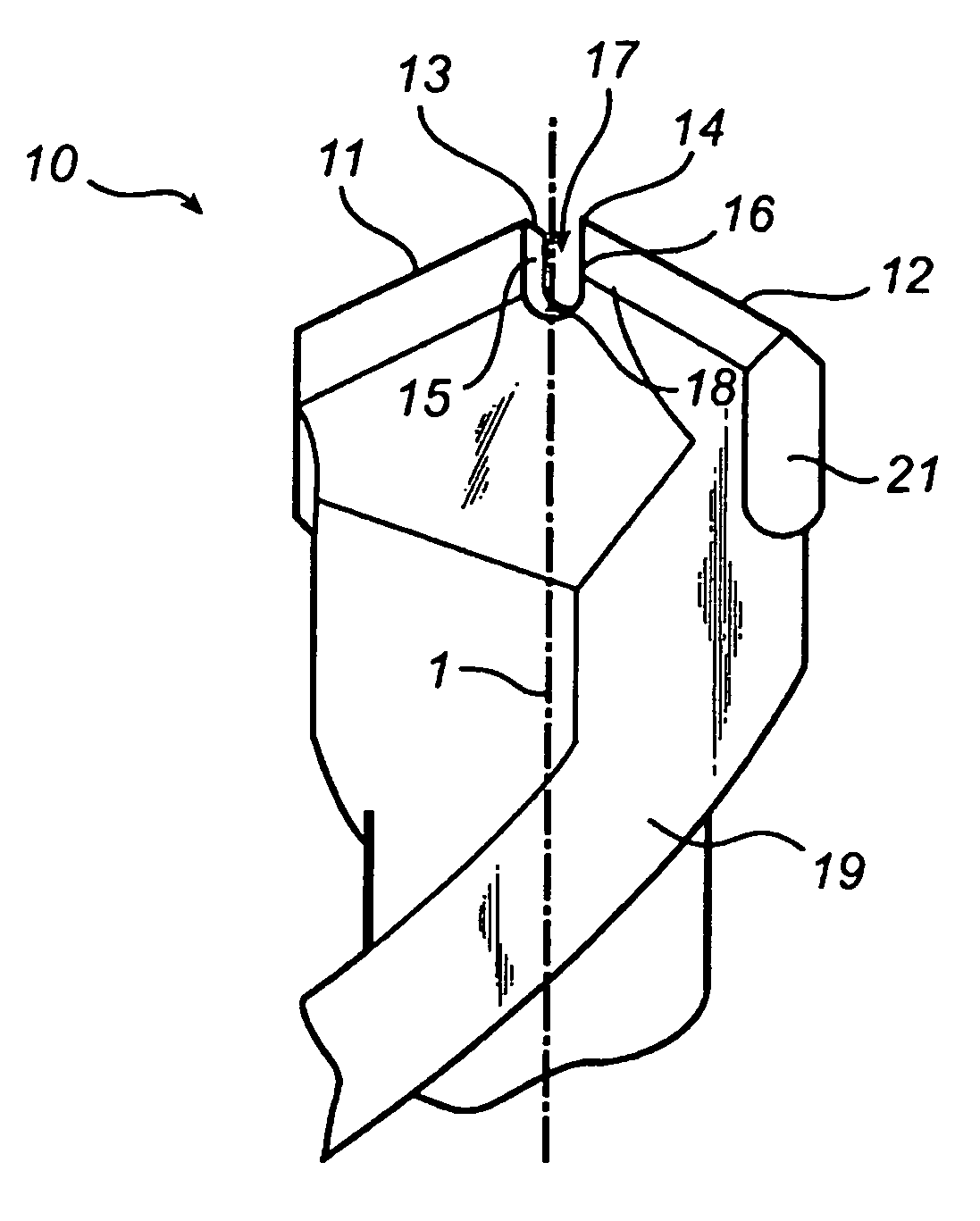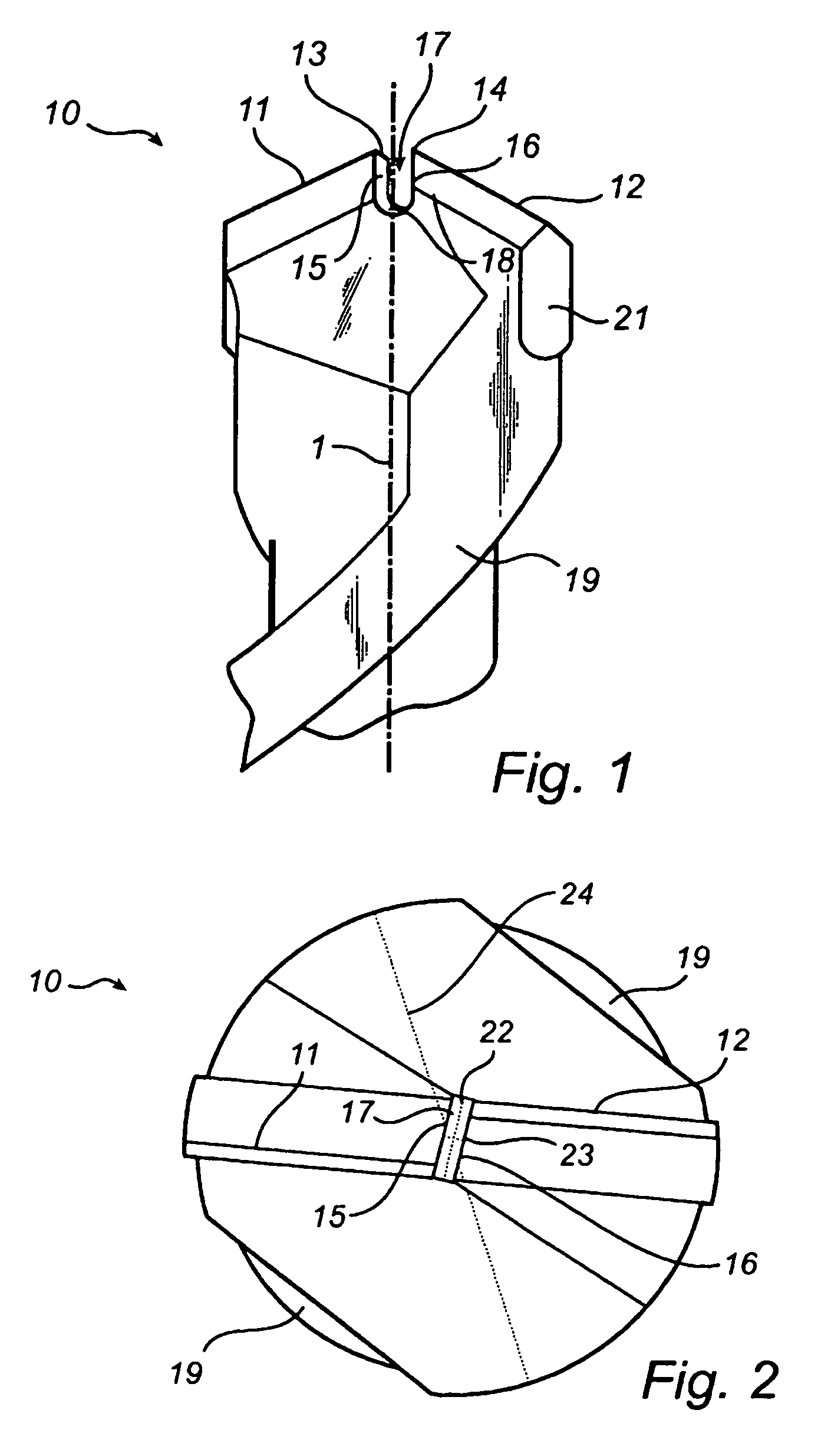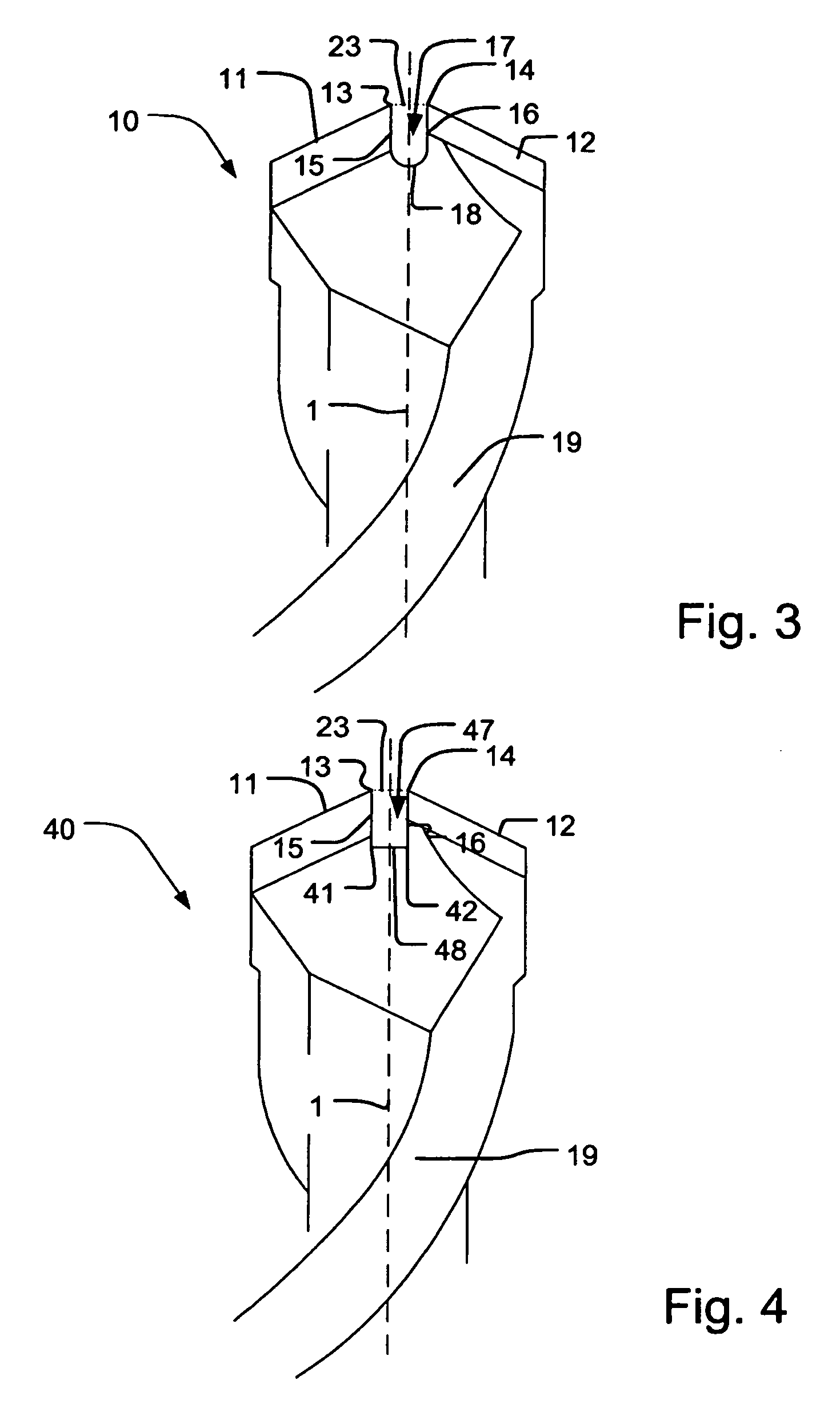Rotary drill
a rotary drill and drill bit technology, applied in drilling machines, turning apparatuses, cutting machines and methods, etc., can solve the problems of too sharp cutting edge and dead center, and achieve the effect of reducing thrust load, less wear, and long li
- Summary
- Abstract
- Description
- Claims
- Application Information
AI Technical Summary
Benefits of technology
Problems solved by technology
Method used
Image
Examples
example 1
[0134]An 8 mm Irwin® 10501934 drill was mounted in a pillar drill. The pillar drill was loaded with a constant pressure of 10 kg and rested on a brick. The drilling machine was started and allowed to drill in the brick for the time period indicated in the table.
[0135]
TABLE 1Groove width / mmDrilling depth / mmTime / sec0 (no groove)14200.723201.231201.52920
[0136]Example 1 shows a significantly improved drilling rate as the drill depth is more than doubled, when a groove width of 1.2 mm or 1.5 mm is provided in comparison to when no groove is provided. The drilling rate is significantly improved where a groove width of 0.7 mm is provided. The best result achieved for an 8 mm drill bit is where a groove width of 1.2 mm is provided, corresponding to an increase in drilling rate of 121%.
example 2
[0137]A 16 mm Irwin® 10501867 drill was mounted in a pillar drill. The pillar drill was loaded with a constant pressure of 10 kg and rested on a brick. The drilling machine was started and allowed to drill in the brick for the time period indicated in the table.
[0138]
TABLE 2Groove width / mmDrilling depth / mmTime / sec0 (no groove)7.9401.29.240
[0139]Example 2 shows that the drilling depth has been increased by 1.3 mm, which is an improvement of 16.5% over a drill bit with no groove. Hence, a groove width of 1.2 mm is preferred over no groove.
example 3
[0140]A 6 mm Irwin® drill was mounted in a pillar drill. The pillar drill was loaded with a constant pressure of 10 kg and rested on a brick. The drilling machine was started and allowed to drill in the brick for the time period indicated in the table.
[0141]
TABLE 3Groove width / mmDrilling depth / mmTime / sec0 (no groove)20.8201.033.4201.237.920
[0142]Example 3 shows a significant improvement in the drilling rate when providing the drill bit with a groove width of 1.0 or 1.2 mm, in comparison to when no groove is provided.
PUM
| Property | Measurement | Unit |
|---|---|---|
| diameter | aaaaa | aaaaa |
| diameter | aaaaa | aaaaa |
| diameter | aaaaa | aaaaa |
Abstract
Description
Claims
Application Information
 Login to View More
Login to View More - R&D
- Intellectual Property
- Life Sciences
- Materials
- Tech Scout
- Unparalleled Data Quality
- Higher Quality Content
- 60% Fewer Hallucinations
Browse by: Latest US Patents, China's latest patents, Technical Efficacy Thesaurus, Application Domain, Technology Topic, Popular Technical Reports.
© 2025 PatSnap. All rights reserved.Legal|Privacy policy|Modern Slavery Act Transparency Statement|Sitemap|About US| Contact US: help@patsnap.com



